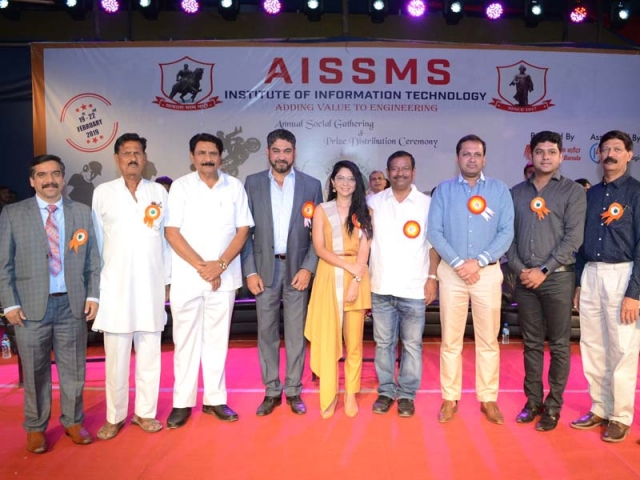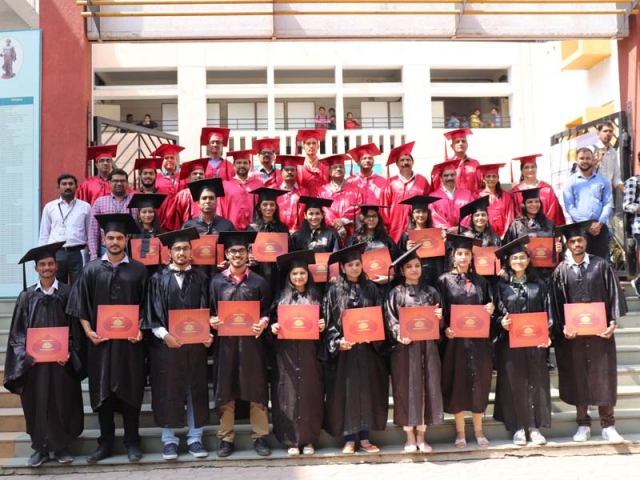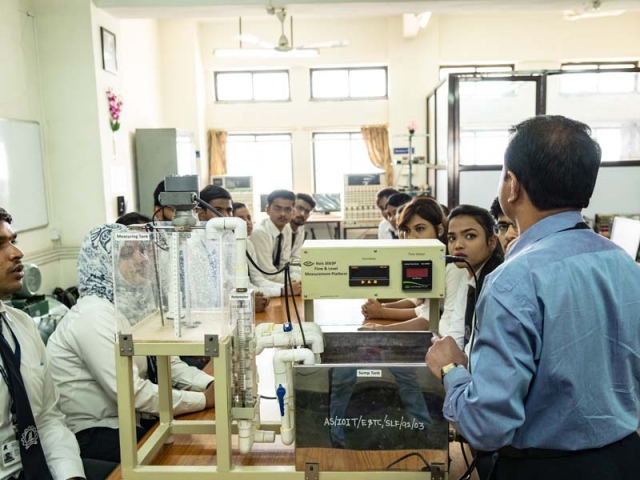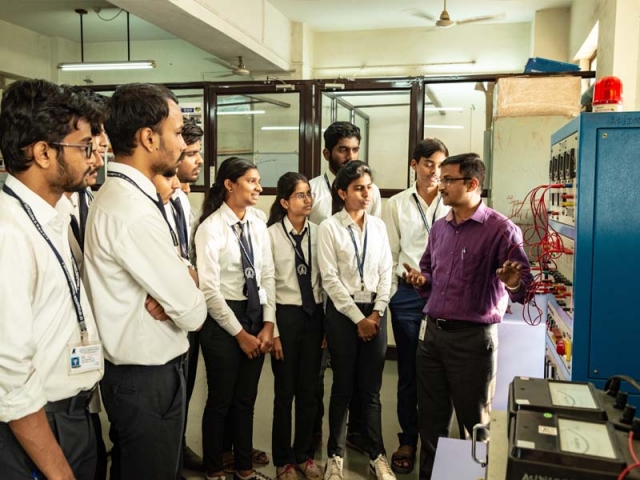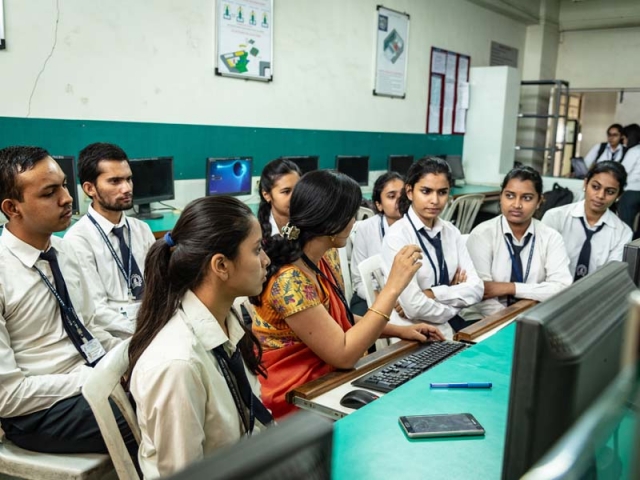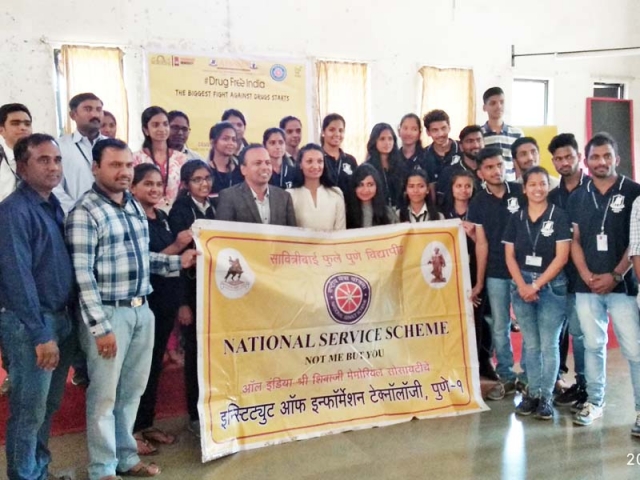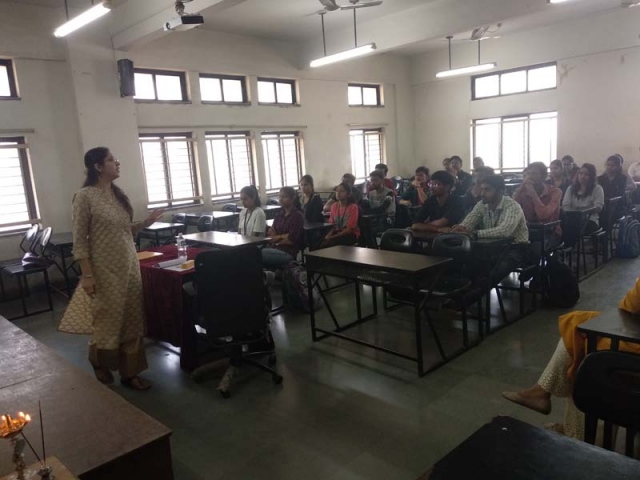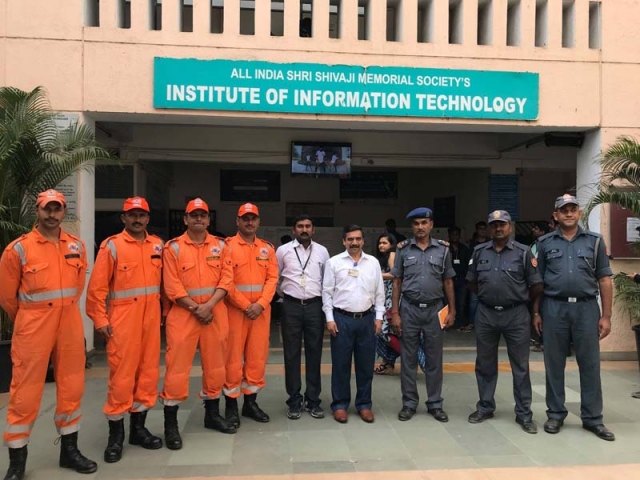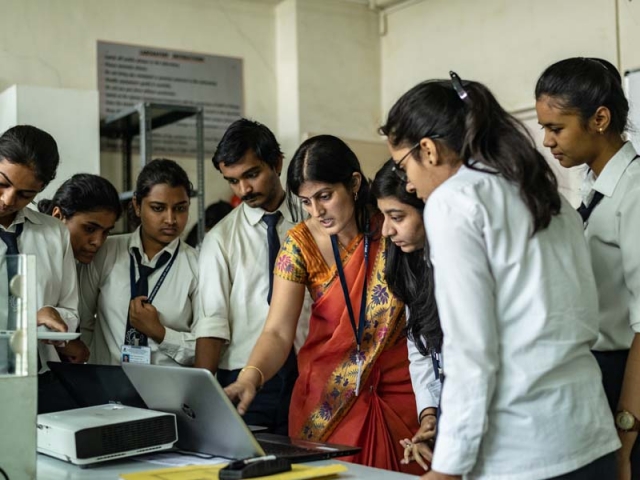On Nov 10, 1917, Rajarshi Chhatrapati Shahu Maharaj announced in Delhi, his proposal to establish a Memorial of Chhatrapati Shivaji Maharaj in the City of Pune. In the proposal, he declared his intention of creating a central hall with Chhatrapati Shivaji Maharaj’s life size statue and a hostel to accommodate a hundred Maratha students. The institute was to act as a rallying centre for Maratha activities all over India, giving a concrete shape and impetus to the diverse endeavours for the advancement of the Maratha community. Rajarshi Chhatrapati Maharaj wrote letters to Rajesaheb of Dhar and Dewas and said it was a psychological movement to do the work. Demanding a liberal and prompt support from all the Maratha Rulers, Rajarshi Chhatarapati Shahu Maharaj a dded that the matter stood very near his heart. To enlist their support, he sent Pawar and Khaserao Jadhav to them. Khaserao took an active interest in the education of the Marathas and was entrusted with the execution of the scheme about the Shri Shivaji Memorial. At the end of November 1917, Khaserao visited Pune and sent an estimate to Rajarshi Chhatrapati Shahu Maharaj for the building, lands and other things. The cost of the memorial estimated at Rupees three lakhs. On Dec 27, 1917, Rajarshi Chhatrapati Shahu Maharaj, on a pressing demand from Khaserao Jadhav, presided over the 11th session of the Maratha Educational Conference at Khamgoan. Further discussions on the Memorial were conducted at Khamgoan. Thereafter around 7.5 acres were acquired at Bhamburda village in front of Shanwar Wada for Rupees One lakh. On Sept 1, 1921, Rajarshi Chhatrapati wrote to Lord Reading, then Governor General of India, to secure the Shivaji Memorial the honour of its foundation stone to be laid at the hands of his Royal Highness, the Prince of Wales. Despite a little reservation on the part of the Viceroy, Rajarshi Chhatrapati Shahu, in his inimitable way, prevailed on the Viceroy to ensure the presence of the Prince.
The preparations for the foundation stone laying ceremony started in real earnest and unbounded fervour. On the morning of Nov 19, 1921, thousands of people gave a tremendous ovation to the Prince of Wales at Poona Station and outside. The enthusiasm reached its climax when the Chhatrapati conducted the Prince through the crowds. Their shouts of Prince-ki-Jai, Shivaji-ki-jai, Shahu-ki-jai echoed throughout the neighbourhood! The Prince of Wales sat in a royal carriage drawn by six horses. The Grand Procession reached Bhamburda accompanied by the Kolhapur Lancers and the Gwalior Imperial Service Lancers. Welcoming the Prince of Wales, Shahu Chhatrapati then said with great pride that the Indians owed to the Royal House of England everlasting gratitude for inaugurating a wise and liberal policy of throwing open to all alike the doors of knowledge through liberal education thereby creating in them a sense of self-respect. “Your Royal Highness,” he continued, “can well imagine the intensity of feelings of reverence and pride with which the Marathas cherish the memory of the great Shivaji who has immortalised the name Maratha in the pages of history and who has instilled in them the soldierly qualities which were manifested in the Great World War.” “It was this great statesman, ” Shahu proceeded “who by introducing the system of eight ministers foreshadowed the system of Cabinet Govt in India and it was he who first conceived the idea of founding an Indian Navy, Your Royal Highness cannot fail to admire the strength of Character of this statesman and warrior who was also a bold reformer and who combated bravely the prejudices of his times. With all his zeal for Hindu Religion, he had, like the Great Akbar, the same toleration for all castes and creeds. As Your Royal Highness is aware the Marathas have been warriors since the birth of the race. To this day the great Maratha ditch at Calcutta stands a silent witness to their prowess.” “The Maratha,” he went on, “has come into his own, and we believe, that we have now the right to a place in the Empires battle line, with the best and the bravest of the fighting races.” “It now rests with us to take full advantage of the educational opportunities and the equality which all peoples of whatever religion enjoy as their birthright. And now we must leave no stone unturned to fit ourselves for our place not only in the field, but in the Council Chamber and to dedicate to the service of the Empire not only our sword but our pen.”
In his speech the Prince of Wales, while laying the foundation stone said that “Shivaji not only founded an Empire, but created a Nation.”He further said, that, he appreciated the aim of the Shivaji Memorial Society to associate the name of Shivaji with and important education institution. Sir Stanley, the editor of the Times of India, in his editorial of Nov 22, 1921, paid glowing tributes to the invaluable help Shahu had rendered to the British Empire during the Great War, and appreciated Shahu’s description of Shivaji as “a man so varied, that he seemed to be, not one, but all mankind’s epitome.” Memory of Shivaji, it added, had kept alive the fighting traditions of the Mahrattas. The Times of India quoted with great appreciation, the remarks made by His Royal Highness that Shivaji not only founded an Empire but created a Nation” and Shahus statement that “the Mahrattas have been warriors since the birth of their race.” Besides people from all over the Country including important officials of the Empire, The Viceroy and His Majesty from England also expressed joy at the success Shahu had attained at the function.
Rajarshi Chhatrapati Shahu Maharaj had convened a meeting of the committee of the All India Shivaji Memorial Society on 25 May 1922, however fate willed otherwise. A little before 6 am on the morning of 06 May 1922, at Mumbai, Rajarshi Chhatrapati Shahu Maharaj, sat up a moment in bed and said, “I am ready to go. I have no fears. Good-bye to all.” At 6 am, he, passed away, at the age of 48, one of the greatest Rulers in Indian history.
The mantle of carrying the work of the Memorial forward fell on the shoulders of HH Alija Bahadur Madho Rao Scindia, however before he could take the work any further, the cruel hands of death snatched him away too on the fateful day of June 05, 1925.
Chhatrapati Rajaram Maharaj was elected President of the All India Shivaji Memorial Society and took on onerous task of the creation and erection of the statue. He set himself a timeframe of three years for the completion of this arduous mission and fixed 16 June 1928 as the date of unveiling of the statue. As per the date of birth of Chhatrapati Shivaji Maharaj then available, it was believed then, that the Great Emperor would complete three hundred years on the said date. Many members of the Memorial committee were of the opinion that the statue of Chhatrapati Shivaji Maharaj be made in Europe, however Chhatrapati Rajaram Maharaj was confident that Indian Sculptors were capable of producing a statue of equivalent quality here in India itself. Initially he assigned the making of the statue to the renowned sculptor Rao Bahadur Mhatre and the Job of making four historical plaques was assigned to young and upcoming sculptor Nanasaheb Karmarkar. Out of the four plaques, two plaques, one depicting the Coronation Ceremony of Chhatrapati Shivaji Maharaj, and, the other depicting the battle of Wani-Dindori, were of size 9 ft x5.5 ft each, each weighing one tonne, were to adorn, either sides of the pedestal, and two plaques of 5.5 ftx3 ft out of which one was of Goddess Bhavani in marble would adorn the front and the other depicting the famous incidence of “Kalyan Khajina” was to be mounted on the rear of the pedestal. Karmarkar completed the making of all the panels, three months before the deadline given to him, while, Mhatre’s work had not progressed much. Due to the slow progress of Rao Bahadur Mhatre, and, happy with the job done by Nanasaheb Karmarkar, the entire job including the making of the statue was reassigned to Nanasaheb. The making of the statue was so close to the heart of Chhatrapati Rajaram Maharaj that he had allotted space to Karmarkar within his palace “Shivtirth” at Mumbai for erection of a studio to facilitate making of the plaques as well as the statue of Aai Saheb Maharaj , he was allotted further space, as now with the additional job of the statue, the studio needed to extended. It had to be large enough to accommodate a 60 feet travelling crane, and the entrance to the studio had to be large enough to allow entry of trucks into the studio easily. It took two months for the studio to be ready in all respects. Chhatapati Rajaram Maharaj arranged for his prized Arabian horse ’Shahnawaz” to be brought in from Kolhapur to serve as a model for the horse in the statue! A revolving platform for the horse was made for better visuals of the horse from all sides and angles! The statue was to measure 13.5 ft in height 13ft in length and 3.5 ft in width. A search was started for a foundry equipped with a suitable crane with a capability to lift 15 tonnes or more alongwith the requisite experience of casting 15 to 20 tonnes. Mazgoan Docks foundry was discovered to be only one in India with the requisite capability then! The statue was finally cast on the night of June 01, 1928 at Mazgoan docks by a team of 175 workers pouring molten bronze simultaneously from two barrels containing 8 tonnes of liquid bronze each, hooked to cranes at two ends, to create a single piece casting, for the first time ever, in India! Almost 500 workers waited through the night to witness the successful completion of the casting. The opening of the cast was an unbelievable sight for the on lookers! Dumbfounded, they witnessed the statue come to life. Not only did Chhatrapati Shivaji Maharaj seem alive but the horse appeared to be breathing! The entire campus of Mazgoan docks reverberated with the echoes of Chhatrapati Shivaji Maharaj ki Jai!
The transportation of the statue was a very complex subject! The height of the statue was 13.5 feet and the packing would add another 1.5 ft to it thereby increasing the height to 15 ft. With this height it was impossible for the statue to pass through the tunnel at Khandala. Suggestions were made to transport the statue by ship to Ratnagiri and thereafter transport either by other means to Poona. The unveiling of the statue was slated for June 16, 1928 and to meet the target date via the sea route seemed impossible. The tunnel was inspected by the railway authorities and they found the tunnel was 9.5 ft in height at the lowest level. The height of the wagon from the track was 3 ft. Therefore it was necessary to make a special trailor which would be only one foot from the track. It was decided not to pack the statue. If loaded slanting, the unpacked statue would be hanging out of the wagon and would pose an obstruction to traffic on both the sides.
Finally with an escort of 50 persons in three wagons, and the specially designed wagon towed by a railway engine, with traffic brought to a standstill on both the sides of the route, the statue started its historic journey from Mazagoan docks to Wadala station to Pune on June 10, 1928. When the statue passed through the tunnel the head of the statue was barely three inches below the top of the tunnel! The Statue thus reached Bhamburda (Now Shivaji Nagar) on the night of June 10, 1928 greeted by the rhetoric reverberation of Chhatrapati Shivaji Maharaj ki Jai! The Statue was unveiled by the then Governor, Sir Leslie Wilson on June 16, 1928. The construction of the Memorial Hall, which today stands as the main building of the residential school and the society office was taken up next. It was designed with spacious halls for meetings and a library for a future History Research Institute. But the idea of turning the Memorial into a Military School had been gaining preference over other plans with Chhatrapati Rajaram Maharaj and the other members of the Society. The building was completed by Oct 1931 at a total cost of Rs 4,65,000/-. At the instance of Chhatrapati Rajaram Maharaj, a personal Inspection of the building was conducted by Field Marshal Sir Philip Chetwode, the then Commander in Chief of the Armed Forces of India, who declared it fit for a Military School.
In His Presidential speech at the meeting of All India Shri Shivaji Memorial Society on Nov 16, 1931, Chhatrapati Rajaram Maharaj said “With the splendid building as it stands there today commanding as it were, the entire city of Poona, and, with the statue of Shri Shivaji Maharaj looming before it, what better use of the building can be made than its utilization as a Military School? It can be the only befitting memorial to my great ancestor whose military capabilities have become a matter of household reverence today!”
The formal inauguration ceremony of Shri Shivaji Preparatory Military School was performed by H.E Sir Fredrick Sykes, the then Governor of Bombay on Sept 20, 1933. In September 1934, the All India Shri Shivaji Memorial Society had spectacularly promoted the aim and ideal of the Military School by acquiring 25 acres of land near the sangam of the Mullah and Mutha rivers.
The Society started a day school and junior college in 1972. To keep up with the changing times, in 1992, All India Shri Shivaji Memorial Society made a foray into higher and technical education. Today besides running residential and Day schools and Junior Colleges ranging from vocational to other disciplines, AISSMS runs world class ITI which has collaborated with Germany to impart vocational training, Polytechnic in two shifts, Hotel Management and Catering Technology, Pharmacy, Engineering Colleges with a wide spectrum of disciplines, and Management College in two shifts as well. All our Colleges except Polytechnic run under-graduate as well as Masters Programmes in various disciplines, all affiliated to the Prestigious Pune University. Our Colleges have not only obtained accreditation from the National Board of Accreditation but have signed MOU’s with Universities from the UK, the USA and Germany to run joint programmes of global standards. We can truly boast of imparting world class education from KG to PG with state of the art equipped laboratories for doctoral studies and Research work. Every year besides churning out University toppers we produce top cultural and sportspersons. Our Alumni have earned for themselves and for the society, laurels, all over the world. To keep up with technological advances the institutes under the flagship of AISSMS are now on fast-track growth path. The institutes are committed towards creating a community which is vibrant and which provides a lifelong learning experience and professional development. Corporates, academicians, industrialists and the student community have lauded the efforts made by the All India Shri Shivaji Memorial Society to take the Society to unscaled heights. The Society is now poised to receive the President of India on December 28, 2013 to unveil the Statue of Rajarshi Chhatrapati Shahu Maharaj, Rishi amongst the Raja’s, true Ryatecha Raja, Educationist, Social Reformer, Champion of the underprivileged, Architect of countless benevolent and innovative developmental Projects and acts, Great Visionary, Founder President of AISSMS, whose ethos, ideals and dreams All India Shri Shivaji Memorial Society is vehemently trying to realise to the fullest measure!

